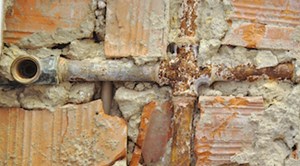Report outlines strategies to strengthen water infrastructure in underserved communities
(UI) — A newly released report examines ways to improve water infrastructure in historically underserved areas, particularly those most affected by climate change, the Associated Press (AP) reported.
The study, published by the Pacific Institute in collaboration with DigDeep and the Center for Water Security and Cooperation, highlights practical solutions such as nature-based approaches, advanced water conservation techniques, and financial assistance programs.
Many low-income and rural communities face deteriorating water infrastructure, leading to leaks, contamination, and unreliable access to clean water. In some areas, outdated systems waste billions of gallons of water annually, while families struggle to afford costly repairs and upgrades. The report notes that extreme weather events, including hurricanes and wildfires, have further strained these fragile water networks, leaving thousands without safe drinking water for extended periods.
Federal support for infrastructure improvements has also declined, making it harder for communities to secure funding for critical repairs and modernization efforts, according to AP. Without sufficient investment, the cycle of water shortages and infrastructure failures is expected to continue.
The report highlights various strategies to enhance water resilience, including rainwater harvesting systems, gray water reuse, and wetland restoration. These approaches can help conserve water, mitigate flood risks, and improve supply reliability. However, the cost of implementing and maintaining such systems remains a significant barrier for many smaller communities.
To address financial constraints, the report calls for expanded government-funded programs that assist households with water and sewer costs. Some existing initiatives, such as the Low Income Household Water Assistance Program, have provided relief, but long-term funding remains uncertain.
Despite ongoing challenges, some infrastructure improvements are already making a difference. In the Navajo Nation, for example, solar-powered water systems have been installed in hundreds of homes, providing clean water to thousands of residents who previously had to travel long distances to access it.
The report showed that while solutions exist, ensuring sustainable and equitable water access will require stronger investment, innovative policy approaches, and community-driven initiatives.
Related News
From Archive

- Glenfarne Alaska LNG targets late-2026 construction start for 807-mile pipeline project
- U.S. water reuse boom to fuel $47 billion in infrastructure spending through 2035
- $2.3 billion approved to construct 236-mile Texas-to-Gulf gas pipeline
- Major water pipe break in Puerto Rico hits over 165,000 customers
- Potomac River Tunnel project enters construction phase beneath Washington, D.C.
- Pennsylvania American Water launches interactive map to identify, replace lead water service lines
- Trump's tariffs drive $33 million cost increase for Cincinnati sewer project
- Utah city launches historic $70 million tunnel project using box jacking under active rail line
- Tulsa residents warned after sewer lines damaged by boring work
- Fatal trench collapse halts sewer construction in Massachusetts; two workers hospitalized




Comments